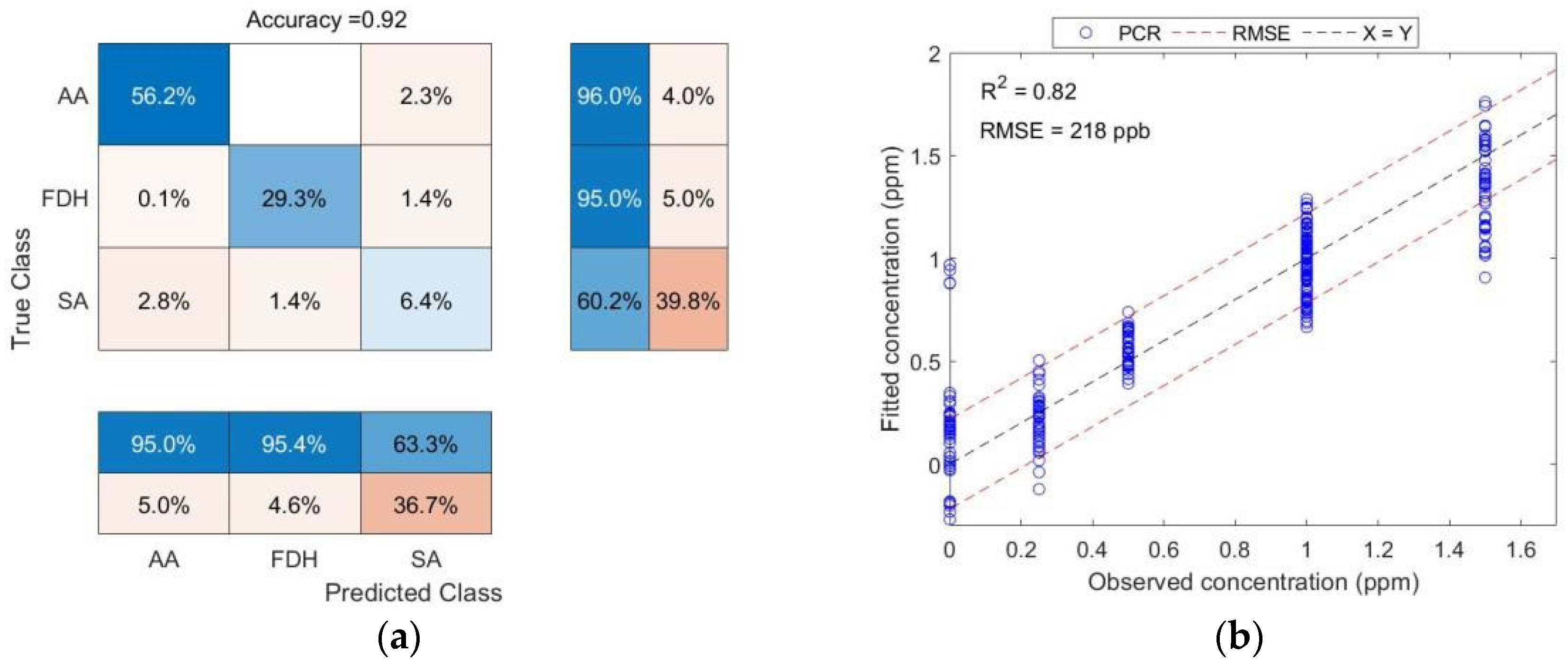Machine Learning for Enhanced Operation of Underperforming Sensors in Humid Conditions †
Abstract
:1. Introduction
2. Materials and Methods
3. Discussion
Author Contributions
Funding
Institutional Review Board Statement
Informed Consent Statement
Data Availability Statement
Conflicts of Interest
References
- Wilkens, W.F.; Hartman, J.D. An electronic analog for the olfactory processes. Ann. N. Y. Acad. Sci. 1964, 116, 608–612. [Google Scholar] [CrossRef] [PubMed]
- Park, S.Y.; Kim, Y.; Kim, T.; Eom, T.H.; Kim, S.Y.; Jang, H.W. Chemoresistive materials for electronic nose: Progress, perspectives, and challenges. InfoMat 2019, 1, 289–316. [Google Scholar] [CrossRef]
- Domènech-Gil, G.; Puglisi, D. Benefits of virtual sensors for air quality monitoring in humid conditions. Sens. Actuators B Chem. 2021, 344, 130294. [Google Scholar] [CrossRef]
- Domènech-Gil, G.; Puglisi, D. A virtual electronic nose for the efficient classification and quantification of volatile organic compounds. Sensors 2022, 22, 7340. [Google Scholar] [CrossRef] [PubMed]

Disclaimer/Publisher’s Note: The statements, opinions and data contained in all publications are solely those of the individual author(s) and contributor(s) and not of MDPI and/or the editor(s). MDPI and/or the editor(s) disclaim responsibility for any injury to people or property resulting from any ideas, methods, instructions or products referred to in the content. |
© 2024 by the authors. Licensee MDPI, Basel, Switzerland. This article is an open access article distributed under the terms and conditions of the Creative Commons Attribution (CC BY) license (https://creativecommons.org/licenses/by/4.0/).
Share and Cite
Domènech-Gil, G.; Puglisi, D. Machine Learning for Enhanced Operation of Underperforming Sensors in Humid Conditions. Proceedings 2024, 97, 87. https://doi.org/10.3390/proceedings2024097087
Domènech-Gil G, Puglisi D. Machine Learning for Enhanced Operation of Underperforming Sensors in Humid Conditions. Proceedings. 2024; 97(1):87. https://doi.org/10.3390/proceedings2024097087
Chicago/Turabian StyleDomènech-Gil, Guillem, and Donatella Puglisi. 2024. "Machine Learning for Enhanced Operation of Underperforming Sensors in Humid Conditions" Proceedings 97, no. 1: 87. https://doi.org/10.3390/proceedings2024097087





